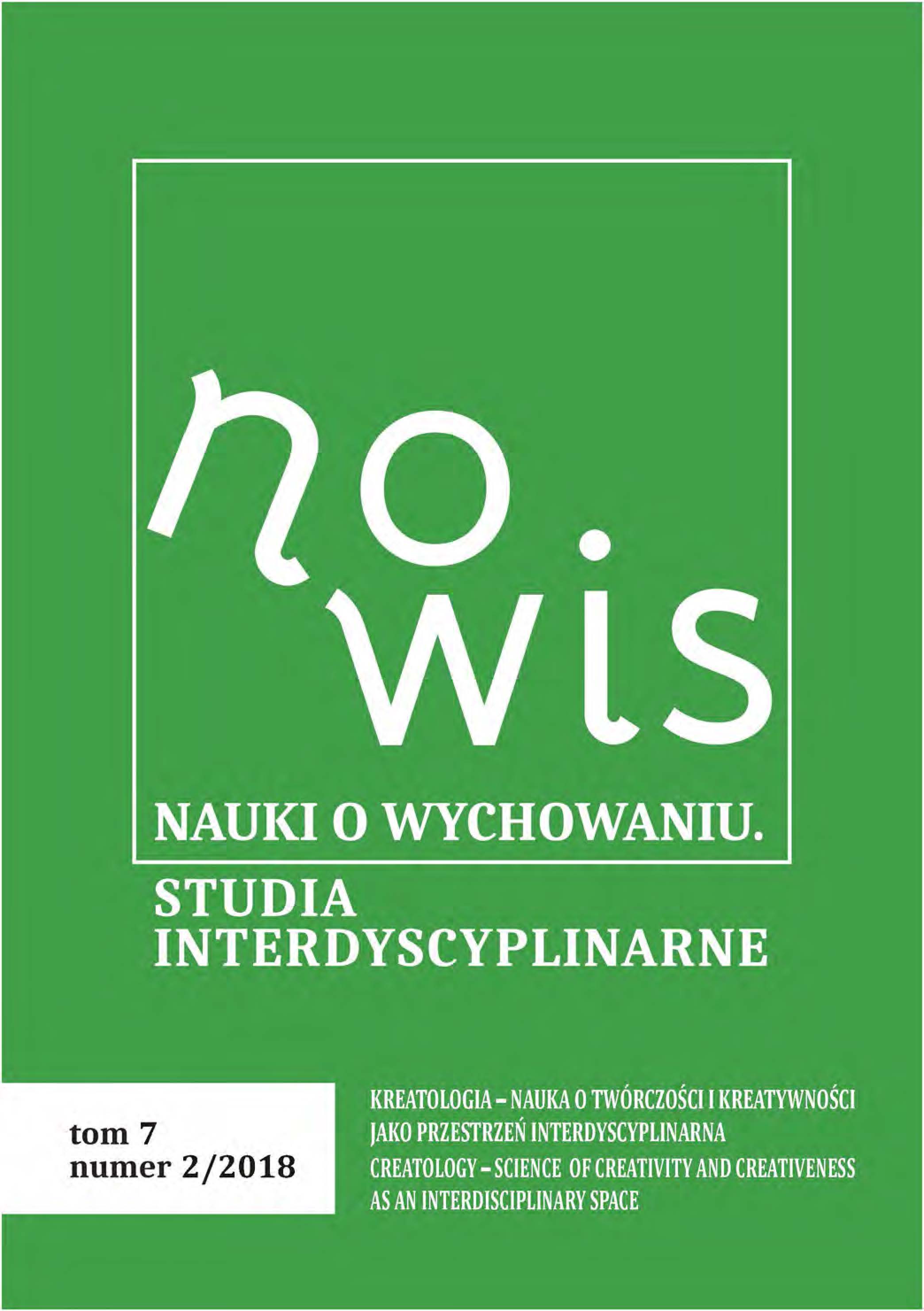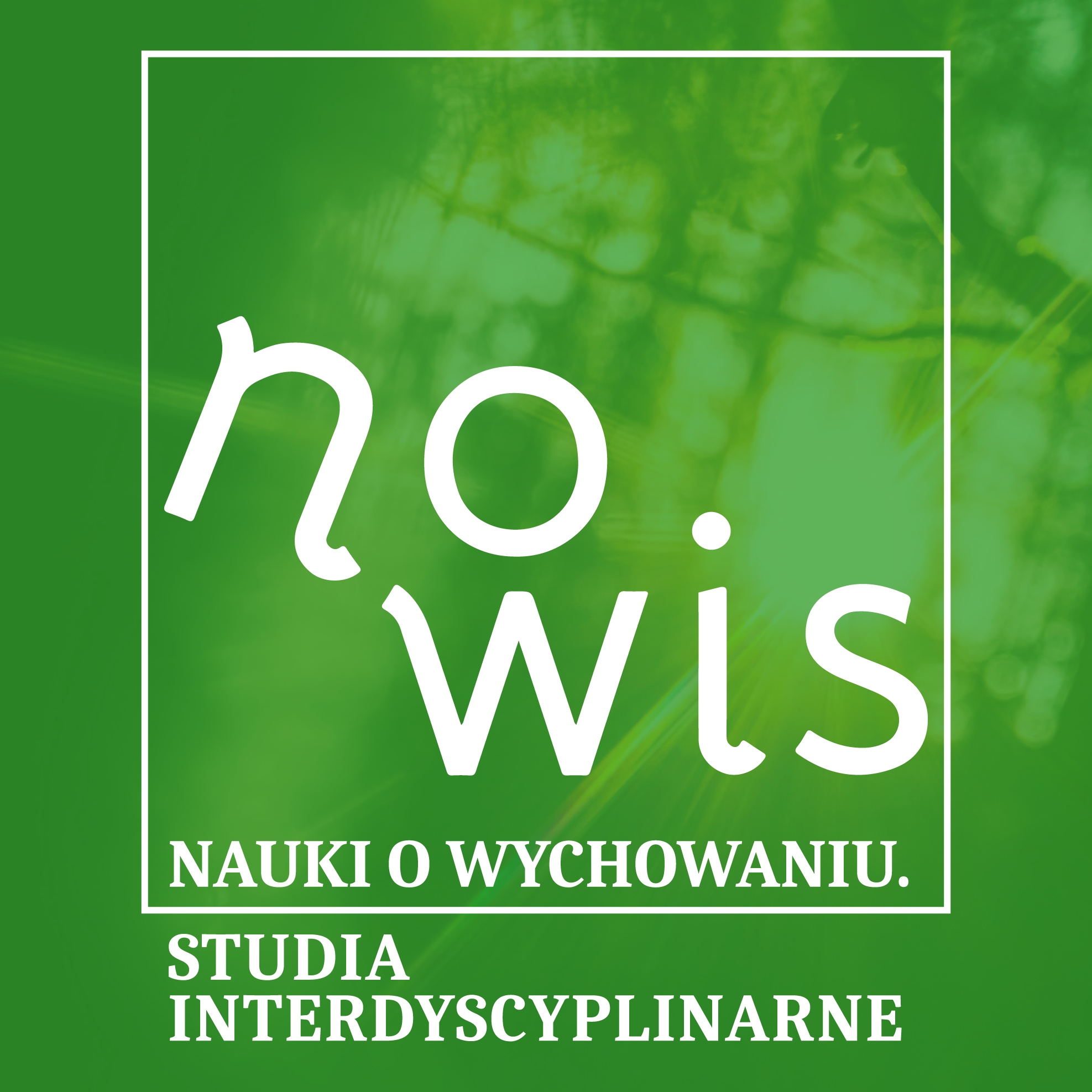Uwaga na twórczość! Poznawcze aspekty kreatywności
DOI:
https://doi.org/10.18778/2450-4491.07.03Słowa kluczowe:
twórczość, uwaga, pamięć robocza, improwizacjaAbstrakt
Głównym problemem badawczym jest różnicowanie stanu uwagi w czasie wykonywania zadań konwergencyjnych i dywergencyjnych. Zadania dywergencyjne wiązane są z procesami twórczymi. Zadania te wymagają różnorodnych i często nowych rozwiązań. Niezbędne jest wówczas aktywowanie w pamięci roboczej informacji słabo połączonych z siecią pamięci długotrwałej. Kluczowym procesem w aktywowaniu informacji w pamięci jest uwaga. Postawiona została hipoteza mówiąca, że zadania dywergencyjne są wykonywane przy większej ekstensyfikacji uwagi niż zadania konwergencyjne. Procedura badawcza wykorzystana w przeprowadzonym eksperymencie opierała się na jednoczesnym wykonywaniu zadania konwergencyjnego (odtwarzania zapamiętanej melodii) lub dywergencyjnego (improwizacja w oparciu o zapamiętaną melodię), przy jednoczesnym rozwiązywaniu testu mierzącego ekstensywność uwagi. Uzyskane wyniki wspierają postawioną hipotezę. Procesy twórcze zależą od stanu uwagi i jej aktywnego działania.
Bibliografia
Baddeley A. D. (1986) Working memory, Oxford, Clarendon Press. Baddeley A. D. (1993) Working memory or working attention? w: Attention: Selection, awareness, and control. A tribute to Donald Broadbent, A. D.
Google Scholar
Baddeley, L. Weiskrantz (eds.), New York, Clarendon Press/Oxford University Press.
Google Scholar
Beaty R. E., Smeekens B. A., Silvia P. J., Hodges D. A., Kane M. J. (2013), A First Look at the Role of Domain-General Cognitive and Creative Abilities in Jazz Improvisation, “Psychomusicology: Music, Mind & Brain”, no 23/4, s. 262–268.
Google Scholar
Cowan N. (1999) An embedded-process model of working memory w: Models of working memory. Mechanisms of active maintenance and executive control, A. Miyake, P. Shah (eds.), Cambridge, England, Cambridge University Press, s. 62–101.
Google Scholar
De Dreu C. K. W., Nijstad B. A., Baas M., Wolsink I., Roskes M. (2012) Working Memory Benefits Creative Insight, Musical Improvisation, and Original Ideation Through Maintained Task-Focused Attention, “Personality and Social Psychology Bulletin”, no 38/5, s. 656–669; doi: 10.1177/0146167211435795.
Google Scholar
Finke R. A., Ward T. B., Smith S. M. (1992) Creative cognition, Cambridge, MA, MIT Press.
Google Scholar
Friedman R. S., Förster J. (2010) Implicit affective cues and attentional tuning. An integrative review, “Psychological Bulletin”, no 136, s. 875–893.
Google Scholar
Friedman R. S., Fishbach A., Förster J., Werth, L. (2003) Attentional priming effects on creativity, “Creativity Research Journal”, no 15/2–3, s. 277–286.
Google Scholar
Guilford J. P. (1967) The nature of human intelligence, New York, McGraw-Hill.
Google Scholar
Hommel B. (2012) Convergent and divergent operations in cognitive search w: Cognitive Search: Evolution, Algorithms, and the Brain. Strüngmann Forum Reports, vol. 9, P. M. Todd, T. T. Hills, T. Robbins (eds.), Cambridge, MA, MIT Press, s. 215–230.
Google Scholar
JASP Team (2017), JASP (wersja 0.8.1.2) [Program komputerowy].
Google Scholar
Kolańczyk A. (2011) Uwaga Ekstensywna. Model ekstensywności vs. intensywności uwagi, „Studia Psychologiczne”, nr 49/3, s. 7–27; doi: 10.2478/v10167-010-0024-x.
Google Scholar
Kolańczyk A., Mikołajczyk P. (2011) Uwaga post-medytacyjna osób doświadczonych w medytowaniu, „Studia Psychologiczne”, nr 49/3, s. 57–74; doi: 10.2478/v10167-010-0027-5.
Google Scholar
López-González M., Limb C. J. (2012) Musical creativity and the brain, “Cerebrum”, no 2, s. 1–15.
Google Scholar
Ly A., Verhagen A. J., Wagenmakers E. (2015) Harold Jeffreys’s default Bayes factor hypothesis tests: Explanation, extension, and application in psychology, “Journal of Mathematical Psychology”, no 72, s. 19–32; doi: 10.1016/j.jmp.2015.06.004.
Google Scholar
McElree B. (2001) Working memory and focal attention, “Journal Of Experimental Psychology-Learning Memory And Cognition”, no 27/3, s. 817–835.
Google Scholar
Miyake A., Shah P. (eds.) (1999) Models of working memory: Mechanisms of active maintenance and executive control, Cambridge, UK, Cambridge University Press.
Google Scholar
Mumford M. D., Costanza D. P., Threlfall K. V., Baughman W. A., Reiter-Palmon R. (1993) Personality variables and problem-construction activities: An exploratory investigation, “Creativity Research Journal”, no 6/4, s. 365–389; doi: 10.1080/10400419309534493.
Google Scholar
Oberauer K. (2002) Access to information in working memory: Exploring the focus of attention, “Journal of Experimental Psychology: Learning, Memory, and Cognition”, no 28/3, s. 411–421; doi: 10.1037/0278-7393.28.3.411.
Google Scholar
Oberauer K., Lewandowsky S. (2014) Further evidence against decay in working memory, “Journal of Memory and Language”, no 73/1, s. 15–30; doi: 10.1016/j.jml.2014.02.003.
Google Scholar
Osborn A. F. (1942) How to Think Up, New York, London, McGraw-Hill Book Co.
Google Scholar
Orzechowski J. (2012) Magiczna liczba jeden, czyli co jeszcze zmieści się w pamięci roboczej, Kraków, Wydawnictwo Uniwersytetu Jagiellońskiego.
Google Scholar
Orzechowski J., Piotrowski K. T., Balas R., Stettner Z. (red.) (2009) Pamięć robocza, Warszawa, Academica.
Google Scholar
Piotrowski K. T. (2015) Jakie jest znaczenie różnych procesów poznawczych w twórczym rozwiązywaniu problemów? w: Kreatywność. Pytania i odpowiedzi, I. Pufal-Struzik, Z. Okraj (red.), Kielce, Wydawnictwo Uniwersytetu Jana Kochanowskiego w Kielcach, s. 39–44.
Google Scholar
Piotrowski K. T., Stettner Z., Wierzchoń M., Balas R., Bielecki M. (2009) Eksperymentalne techniki badania pamięci roboczej w: Pamięć robocza, J. Orzechowski, K. T. Piotrowski, R. Balas, Z. Stettner (red.), Warszawa, Wydawnictwo Academica, s. 47–76.
Google Scholar
Ricker T. J., Vergauwe E., Cowan N. (2016) Decay theory of immediate memory: From Brown (1958) to today (2014), “The Quarlerly Journal of Experimental Psychology”, no 69/10, s. 1969–1995; doi: 10.1080/17470218.2014.914546.
Google Scholar
Roczniewska M., Sterczyński R., Popławska A., Szamotulska B., Kolańczyk A. (2012) Test Elips Jako Narzędzie Badania Skaningu Uwagi Ekstensywnej vs. Intensywnej, „Studia Psychologiczne”, nr 49/3, s. 115–128; doi: 10.2478/v10167-010-0031-y.
Google Scholar
Runco M. A., Chand I. (1995) Cognition and creativity, “Educational Psychology Review”, no 7/3, s. 243–267.
Google Scholar
Szmidt K. J. (2007) Pedagogika twórczości, Gdańsk, Gdańskie Wydawnictwo Psychologiczne.
Google Scholar
Tokarz A. (2005) Dynamika procesu twórczego, Kraków, Wydawnictwo Uniwersytetu Jagiellońskiego.
Google Scholar
Treffinger D. J., Isaksen S. G., Dorval K. B. (1997) Kreatywne rozwiązywanie problemów, Radom, Instytut Technologii Eksploatacji.
Google Scholar
Ward T. B. (1994) Structured imagination: the role of category structure in exemplar generation, “Cognitive Psychology”, no 27, s. 1–40.
Google Scholar
Wetzels R., Matzke D., Lee M. D., Rouder J. N., Iverson G. J., Wagenmakers E. J. (2011) Statistical evidence in experimental psychology an empirical comparison using t tests, “Perspectives on Psychological Science”, no 6, s. 291–298; doi: 10.1177/1745691611406923.
Google Scholar
Pobrania
Opublikowane
Jak cytować
Numer
Dział
Licencja

Utwór dostępny jest na licencji Creative Commons Uznanie autorstwa – Użycie niekomercyjne – Bez utworów zależnych 4.0 Międzynarodowe.





 Strona czasopisma, prowadzona przez Zespół redakcyjny NOWiS na platformie Index Copernicus:
Strona czasopisma, prowadzona przez Zespół redakcyjny NOWiS na platformie Index Copernicus: 





